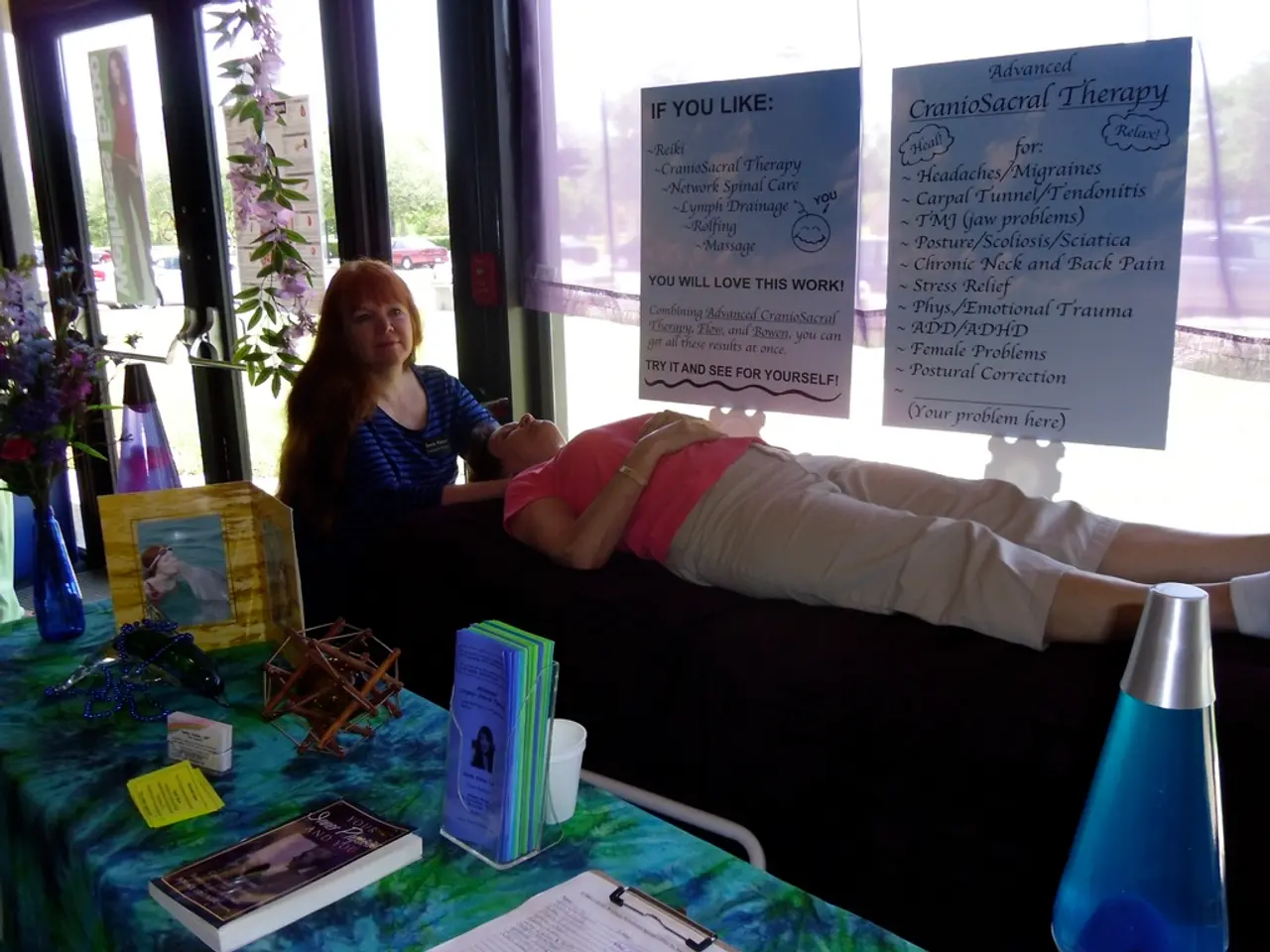Mastectomy Aftereffects: Recognizing Symptoms and Available Remedies
Managing Post-Mastectomy Pain Syndrome: A Multidisciplinary Approach
Post-Mastectomy Pain Syndrome (PMPS) is a neuropathic condition that can affect individuals following breast cancer surgery. Approximately one in every people may experience PMPS, according to the American Cancer Society (ACS).
PMPS can manifest as pain or tingling in the chest wall, underarm, or arm, shoulder pain, pain in the surgical scar, numbness, shooting or prickling pain, and intense itching. The pain can begin anywhere between 2 weeks to 3 months after surgery.
Successful management of PMPS relies on a multidisciplinary approach, focusing on relieving pain and any side effects such as mental health issues.
Medications
Neuropathic pain agents like gabapentin, pregabalin, tricyclic antidepressants, and selective serotonin-norepinephrine reuptake inhibitors (SNRIs) are commonly used to reduce nerve-related pain symptoms such as burning, shooting, or tingling sensations. Over-the-counter remedies for managing PMPS pain may include acetaminophen, nonsteroidal anti-inflammatory drugs (NSAIDs), topical capsaicin cream or patches containing 8% capsaicin, and lidocaine patches. Prescription medications for PMPS may also be considered.
Physical Therapy and Exercise
Physical therapy plays a crucial role in managing PMPS. Gentle arm and shoulder exercises help preserve movement, strength, and function of the upper body, which may alleviate pain and enhance functional recovery. Physical therapy, particularly if started shortly after surgery, can improve the outlook for people with PMPS by helping to improve function and range of motion in the upper body, as well as the quality of life.
Surgical Interventions
In selected cases, procedures such as neuroma excision or scar release can be performed to address nerve entrapment or scar-related pain.
Complementary Therapies
Acupuncture, hypnosis, and cognitive behavioral therapy (CBT) may provide additional relief by modulating pain perception and helping patients cope with chronic pain. However, there is currently little evidence on the effect of alternative therapies on PMPS.
Psychological Support
Since PMPS significantly affects mental health and quality of life, psychological counseling and support groups can address anxiety, depression, and stress related to chronic pain. Psychological treatments may help people to manage any anxiety or depression which may accompany a chronic pain condition.
Pain Management Programs
Multimodal approaches combining pharmacological and non-pharmacological therapies tailored to the individual’s pain characteristics and risk factors (such as younger age and axillary lymph node dissection) improve outcomes.
Ongoing Monitoring and Adjustment
Reassessment of pain control and treatment side effects is essential, including modifying cancer therapy if nerve damage worsens.
In conclusion, successful rehabilitation hinges on early recognition of chronic neuropathic pain post-surgery, consistent pain control measures, physical rehabilitation, and psychological support to optimize functional recovery and quality of life. A combination of treatments may provide the best outlook for PMPS.
- Post-Mastectomy Pain Syndrome (PMPS) is a chronic condition that can affect individuals following breast cancer surgery, causing pain, tingling, numbness, or itching.
- Medications like gabapentin, pregabalin, tricyclic antidepressants, SNRIs, acetaminophen, NSAIDs, capsaicin cream, and lidocaine patches can be used to manage PMPS pain.
- Physical therapy and gentle arm and shoulder exercises can help alleviate pain, preserve movement, and enhance functional recovery.
- Surgical interventions such as neuroma excision or scar release may be considered for nerve entrapment or scar-related pain.
- Complementary therapies like acupuncture, hypnosis, and cognitive behavioral therapy may offer additional relief and help patients cope with chronic pain.
- Psychological counseling and support groups can address anxiety, depression, and stress related to chronic pain, improving mental health and quality of life.
- A multimodal approach combining pharmacological and non-pharmacological therapies, ongoing monitoring, and adjustment according to individual pain characteristics and risk factors can optimize functional recovery and quality of life for people with PMPS.




